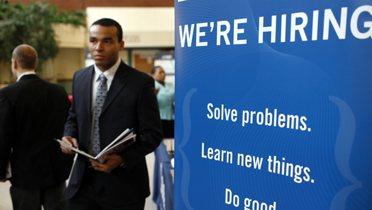The BLS employer survey showed healthy job gains in April. In contrast, the household survey showed a reversal of employment gains we have seen since last November. Private employers reported a pickup of 268,000 payroll jobs in March, a continuation of the strong job gains seen since February. Payroll increases were widespread throughout the private sector. Employers in manufacturing, retail trade, business services, education and health services, and leisure and hospitality industries all saw healthy job gains.
The good news was partly offset by continued weakness in public sector employment. Government employment fell 24,000 in April, and it has declined 814,000 (3.5%) since last May. Part of the drop was due to the fall in the number of Census Bureau employees at the end of the decennial census, but much of it can be traced to declines in state and local government payrolls. State and local employment is likely to shrink further over the next several months. The construction industry also remains very weak, though the sector saw modest job gains for the third successive month. After reaching a peak in 2006, the number of payroll jobs in construction has fallen 2.2 million (28.5%), with nearly all the drop occurring after the onset of the recession. The total rebound in construction employment from its low point after the recession has amounted to just 46,000 jobs.
The April household survey offers a strong contrast to the healthy job gains shown in the survey of employers. Households reported a sharp drop (190,000) in the number of adults who hold jobs. In the previous four months employment gains in the household survey had averaged almost 240,000 per month. Note, however, that employment gains reported by households had exceeded the payroll gains reported by employers in each of those months. In November 2010 through March 2011 employers reported payroll gains of just 169,000 per month. The reversal of this pattern in April means that the both the household and employer surveys now show similar job gains since last November. Using the seasonally adjusted estimates, household employment has increased 0.6% since November while payroll employment increased 0.7%. Financial markets often place heavier weight on the employer survey estimates. Since last November, however, the two surveys show a roughly similar pattern of total employment gain.
Whichever survey we use, it should be plain that the pace of job creation remains too low to bring down the nation’s unemployment rate very fast. The jobless rate rose 0.2% to 9.0% in April, offsetting some of the improvement we have seen since last November, when the unemployment rate was 9.8%. Though the drop in the jobless rate since late last fall has been welcome, only part of it is due to an increase in the percentage of the population that holds a job. The remainder is due to the decline in the percentage of the population that is seeking work. Many jobless workers have exited the labor market, discouraged by their prospects of finding work. The employment-population ratio climbed 0.2 percentage points between November and April, reflecting the increased pace of job creation since last fall. However, the adult employment rate still remains 4.3 percentage points below its level at the end of 2007, before the last recession began. To restore the employment-population ratio to its prerecession level, we will need to create more than 10 million jobs. Even at the faster pace of job creation we have seen since November 2010, this will require more than a half a decade.
The workers who face the worst job prospects are those who have been out of work for a long time. Labor economists have found that workers’ chances of becoming reemployed fall the longer they remain jobless. More than 4 out of 10 of today’s unemployed have been jobless for 6 months or longer. Their prospects of becoming reemployed immediately are not bright. Their situation contrasts strongly with the position of many of the nation’s private employers. Large corporations have seen a sharp rebound in their profitability. In total they are earning profits that exceed the peak levels achieved in the last economic expansion. The latest job report contains little evidence that employers’ new-found prosperity will trickle down to the long-term unemployed anytime soon.






Commentary
Healthy Job Growth Mixed with Worrying Signs
May 6, 2011